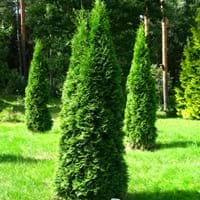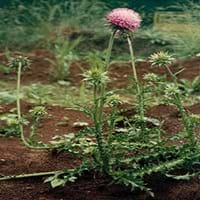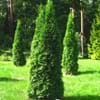Life Span
Perennial
Biennial
Type
Needled or Scaled Evergreen
Bulb, Flowering Plants
Origin
Northeastern United States, Mid-Atlantic United States, Southeastern United States, North-Central United States, Central United States, Canada
World/Pandemic, Europe, Asia
Types
Not Available
Crocus tommasinianus, Crocus etruscus, Crocus vernus, Crocus cambessedesii
Number of Varieties
Not Available
Habitat
Forests, gardens, Roadsides
gardens, Grassland, open Woodlands, orchards, Pastures, tropical environments
USDA Hardiness Zone
3-7
2-10
Sunset Zone
A2, A3, 1a, 1b, 2a, 2b, 3a, 3b, 4, 5, 6, 7, 8, 9, 15, 16, 17, 21, 22, 23, 24
21,22
Habit
Pyramidal
Upright/Erect
Flower Color
Non Flowering Plant
Red, Violet
Flower Color Modifier
Bicolor
Bicolor
Fruit Color
Green, Light Green
Not Available
Leaf Color in Spring
Dark Green
Green, Dark Green
Leaf Color in Summer
Dark Green
Dark Green
Leaf Color in Fall
Olive, Dark Green
Dark Green
Leaf Color in Winter
Dark Green, Brown, Black
Light Green
Leaf Shape
Compound
Ovate
Plant Season
Spring, Summer, Fall, Winter
Spring, Summer, Winter
Sunlight
Full Sun, Partial Sun
Full Sun, Partial Sun
Growth Rate
Medium
Very Fast
Type of Soil
Clay, Loam, Sand
Clay, Loam, Sand
The pH of Soil
Acidic, Neutral
Acidic, Neutral, Alkaline
Soil Drainage
Average
Well drained
Bloom Time
Spring
Spring, Late Spring, Early Summer, Summer
Tolerances
Drought
Pollution, Drought, Salt, Soil Compaction
Where to Plant?
Ground
Container, Ground
How to Plant?
Seedlings, Vegetative Reproduction
Seedlings
Plant Maintenance
Medium
Low
Watering Requirements
Average Water Needs
Average Water Needs, Do Not over Water, Never Over-water, Requires regular watering
In Summer
Lots of watering
Lots of watering
In Spring
Moderate
Moderate
In Winter
Average Water
Average Water
Soil pH
Acidic, Neutral
Acidic, Neutral, Alkaline
Soil Type
Clay, Loam, Sand
Clay, Loam, Sand
Soil Drainage Capacity
Average
Well drained
Sun Exposure
Full Sun, Partial Sun
Full Sun, Partial Sun
Pruning
Prune if you want to improve plant shape, Remove deadheads, Shape and thin as needed
Prune to stimulate growth, Remove damaged leaves, Remove dead leaves, Remove deadheads
Fertilizers
All-Purpose Liquid Fertilizer
Nitrogen, Phosphorous, Potassium, Requires high amount of nitrogen
Pests and Diseases
Pests and diseases free
Insects, Red blotch
Plant Tolerance
Drought
Not Available
Flower Petal Number
Single
Not Available
Fragrant Bark/Stem
Yes
No
Foliage Texture
Fine
Coarse
Foliage Sheen
Matte
Glossy
Attracts
Bees, Birds
Flying insects
Allergy
no allergic reactions
Diarrhea, Nausea, Vomiting
Aesthetic Uses
Beautification, Landscape Designing
Beautification, Showy Purposes
Beauty Benefits
Not Available
Not Available
Environmental Uses
Air purification
Air purification, Food for insects
Medicinal Uses
No Medicinal Use
Unknown, Unknown
Part of Plant Used
Wood
Stem
Other Uses
Showy Purposes
Decoration Purposes
Used As Indoor Plant
No
No
Used As Outdoor Plant
Yes
Yes
Garden Design
Hedges, Screening, Wind Break
Not Available
Botanical Name
THUJA occidentalis 'Techny'
CARDUUS nutans
Common Name
White Cedar
Musk Thistle, Nodding Thistle
In Hindi
Techny Arborvitae
कस्तूरी थीस्ल
In German
Techny Lebensbaum
Nickende Distel
In French
Techny Arborvitae
Musk Thistle
In Spanish
Techny Arborvitae
Cardo de almizcle
In Greek
Techny Arborvitae
musk Thistle
In Portuguese
Techny Arborvitae
musk Thistle
In Polish
Techny Tuja
Musk Thistle
In Latin
Techny Arborvitae
Carduus MOSCHUS
Phylum
Pinophyta
Magnoliophyta
Class
Pinopsida
Magnoliopsida
Family
Cupressaceae
Asteraceae
Clade
Dicotyledonous
Angiosperms, Asterids, Eudicots
Tribe
Not Available
Cynareae
Subfamily
Not Available
Carduoideae
Number of Species
Not Available
Not Available
Season and Care of Techny Arborvitae and Musk Thistle
Season and care of Techny Arborvitae and Musk Thistle is important to know. While considering everything about Techny Arborvitae and Musk Thistle Care, growing season is an essential factor. Techny Arborvitae season is Spring, Summer, Fall and Winter and Musk Thistle season is Spring, Summer, Fall and Winter. The type of soil for Techny Arborvitae is Clay, Loam, Sand and for Musk Thistle is Clay, Loam, Sand while the PH of soil for Techny Arborvitae is Acidic, Neutral and for Musk Thistle is Acidic, Neutral, Alkaline.
Techny Arborvitae and Musk Thistle Physical Information
Techny Arborvitae and Musk Thistle physical information is very important for comparison. Techny Arborvitae height is 300.00 cm and width 150.00 cm whereas Musk Thistle height is 90.00 cm and width 30.00 cm. The color specification of Techny Arborvitae and Musk Thistle are as follows:
Techny Arborvitae flower color: Non Flowering Plant
Techny Arborvitae leaf color: Dark Green
Musk Thistle flower color: Red and Violet
- Musk Thistle leaf color: Green and Dark Green
Care of Techny Arborvitae and Musk Thistle
Care of Techny Arborvitae and Musk Thistle include pruning, fertilizers, watering etc. Techny Arborvitae pruning is done Prune if you want to improve plant shape, Remove deadheads and Shape and thin as needed and Musk Thistle pruning is done Prune to stimulate growth, Remove damaged leaves, Remove dead leaves and Remove deadheads. In summer Techny Arborvitae needs Lots of watering and in winter, it needs Average Water. Whereas, in summer Musk Thistle needs Lots of watering and in winter, it needs Average Water.





